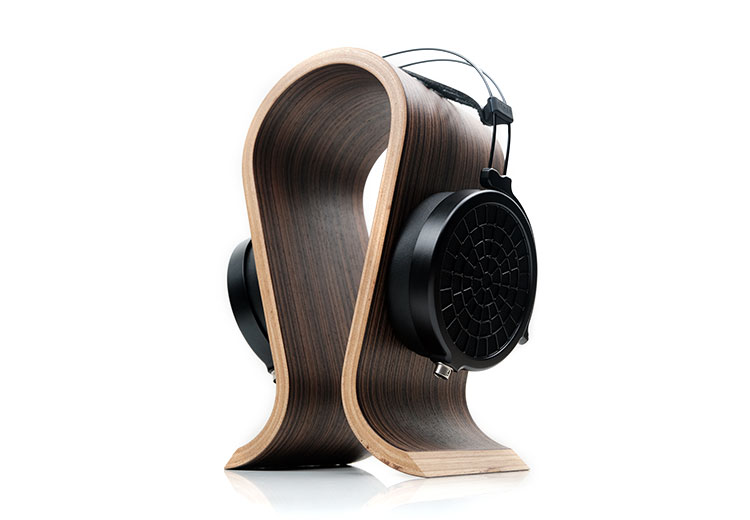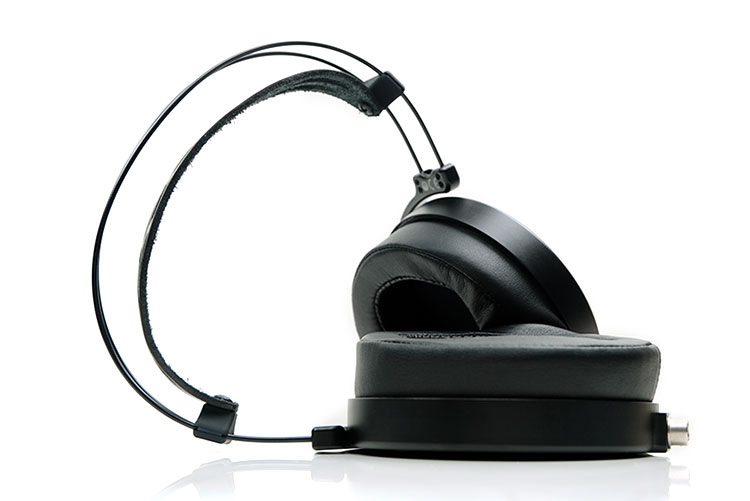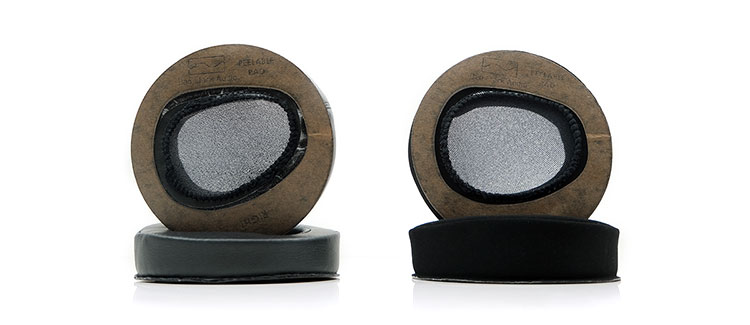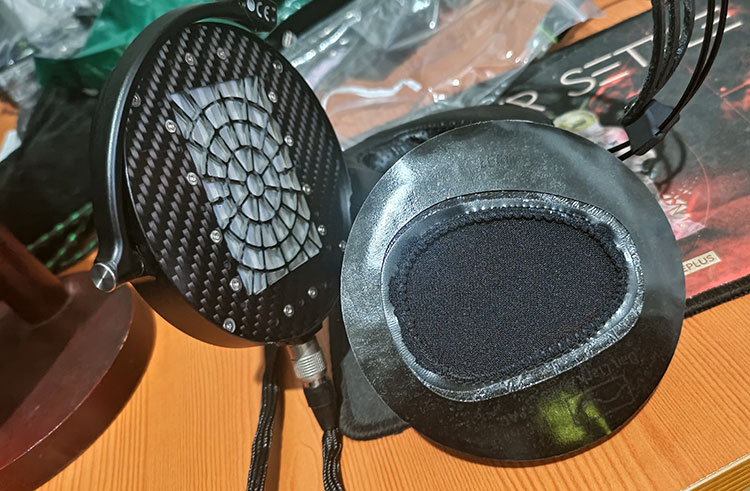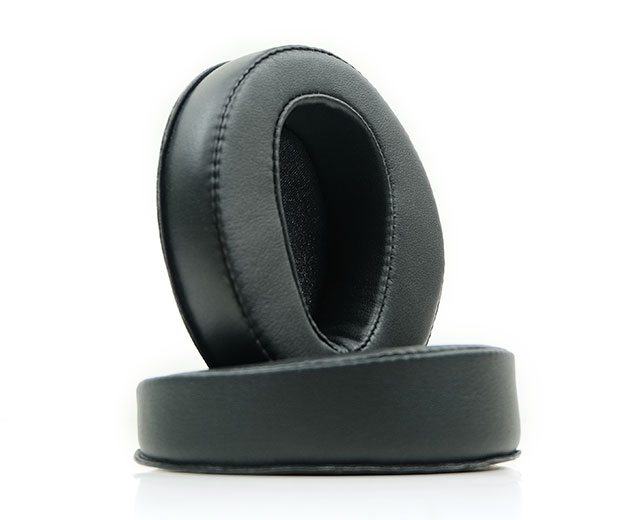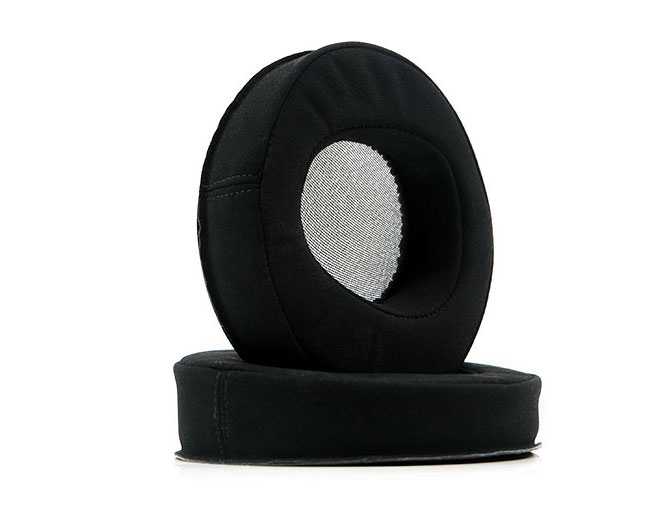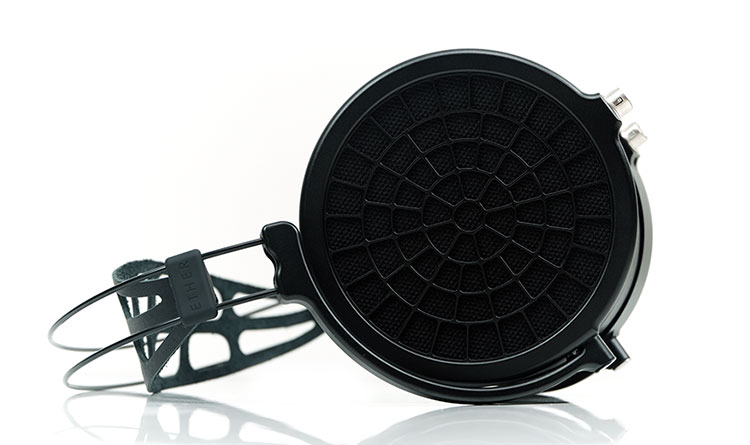The Dan Clark Audio Ether 2 System is a series of specially designed protein leather and suede pads that alter the performance of the main headphones. They are priced at $179.98 for all of them at the checkout when buying your Ether 2 or $89.99 each.
Disclaimer: The Dan Clark Audio Ether 2 System sent to us is a sample in exchange for our honest opinion. We thank the team at Dan Clark Audio for giving us this opportunity.
To read more about Dan Clark Audio products we reviewed on Headfonics click here.
Note, this review follows our new scoring guidelines for 2020 which you can read up on here.
It is not a Dan Clark creation until there is at least some budget-friendly tweak you buy further down the road or at the time as your main purchase. That is what the team is known for, what Dan is known for. The DIY legacy shines bright in this one for sure.
Over the last few years, we have covered these tweaks either as standalone reviews such as the Ether C Flow Upgrade Kit back in late 2018, or as an additional value-add during the main review of one of their excellent headphones. For example, the inner fabric pads that come with AEON 2 Closed we reviewed earlier this year, and how they changed the overall presentation.
And that is really the purpose of these tweaks, to change the tone of each headphone in question or to offer more than one sound for not so many greens.
The Ether 2
The focus from DCA this time is their flagship Ether 2, or what they now call the Ether 2 system which alludes to the interchangeability of the pads rather than just inserting internal pad covers as previously done on the Ether C Flow.
For those of you new to the Ether 2, well it’s a heck of a planar headphone for the price point. The form factor is circumaural full-sized but incredibly light at 290g for a planar headphone in this class. It is not the kind of headphone fitment that would induce you to think, “You know I need a better fitting pad”, it is normally that comfortable to wear.
However, for those with the original stock angular pads back in 2018, you will notice that the earwell or inner opening of the pad is perhaps a little on the tight side in terms of clearing the entire ear. For those endowed with large ears, I suspect you might find them rubbing a little against the walls of the pads.
The size of that earwell is one of the major changes the 2 new pad options bring to the table which you can read more about further down in this review.
Synthetic Leather Pad Sound
As for the overall presentation, it is guided in part by the stock pad choice which is a non-perforated angular synthetic leather with some decent depth. The tone is neutral to slightly warm, more close than expansive but within that staging, the background is really black with some excellent instrumental separation and above-average imaging.
Those concerned that the treble may lack weight or seem a little hard-sounding can relax. The Ether 2 top-end is smooth and slightly to the wet side though not as sparkling as previous versions.
You will find the overall presentation full-bodied, relatively intimate, and at times energetic or powerful yet still forgiving and liquid-like. The Ether 2 is particularly good with female vocals that come to the fore beautifully.
The Pitch
It is a pretty simple proposition actually and that is to create an element of choice for Ether 2 prospective or current owners without breaking the bank. That choice is based more on the sound alterations that each pad brings to the table but with an added element of varying comfort levels with different finishings as well as different internal dimensions.
The pads on their own cost $89.99 each with some very informative breakdowns and measurements on the main website as to what they set out to achieve. You can also buy all 3 (stock on the Ether 2 included) when buying the Ether 2 as a system.
As you will see below, they are also designed as being user-replaceable without any specific skill sets and should last a pretty long time. I believe Dan Clark Audio tested them with over 100 rolls or swaps and the seal on the rear retained the correct sticking strength and seal.
The Pads
DCA offers 3 types of pads for the Ether 2. All three have a rounded wedge-type form factor with a small cloth stretch over the earwell gap to protect your ear from driver contact as well as dust and dirt getting in.
Non-Perforated
The first pad is the original synthetic leather pad which comes with the standard Ether 2. This is the most ‘compact’ of the three earpad options and by compact I mean the inner earwell is less roomy than the suede or perforated pads.
The innards are made from very supple memory foam that in the last year I have used them have not gone annoyingly flat. The edges of the foam around the synthetic leather seams also have held up quite well.
Perforated
The second pad is now the stock pad for the latest Ether 2 and is a similar outer synthetic leather finish but with a bigger earwell so it is a lot roomier and should solve any fit issues you have with the original pad’s tighter earwell size. They also differ on the inner well with a perforated finish as opposed to the original which has none.
They also feel a little softer on the ear so the clamping pressure is not as noticeable compared to the stock pads. I honestly do not feel a huge difference between the original and perforated pads memory foam action so the slight softness or lower clamp is really down to the wider earwell spreading the pressure better.
Suede
The final pads are totally different. Again, a memory foam innard but this time wrapped in a breathable synthetic “vegan” suede finish. These have a similar form factor being wedged also and more or less the same height with an earwell the same size as the perforated pad opening.
Maybe due to the suede material, the memory foam action on the suede versions feels a little springier, and unapplied that springier action kind of makes them feel shallower even though they are not. Of the three these should breathe the easiest and cause the least amount of sweat.
Pad Rolling
The video above explains it fairly well but there have been a few updates that make the process a little easier on the latest edition of the Ether 2.
First up, the pads do not have any hooks or slide-in mechanisms such as you would find on Hifiman or beyerdynamic headphones. Instead, they have a flat surface to the rear coated in a sticky polyurethane gel elastomer (PU gel) covered by a protective wax paper cover.
Each pad is marked for the left and right cup on the rear so it is easy to determine the correct pad for each cup. Then simply line up the seam of the pad with the jack of the Ether 2 at the base and apply pressure making sure the edges of the pads are inside the cup, flush on the baffle, and not sticking on the outside.
The use of a smudger is no longer needed as all the pads now come with this finish allowing you to just grip tightly, peel off then carefully align the new pads over the required area, peel off the stick, and reapply.
Note, that wiping down the area will still help in case of any contamination or dirt that could weaken the seal.
Pad Performance
(Tested with the stock DCA VIVO cable using dCS Ring DAC (Bartok) preamping a Xi Audio Formula S as well as the Bartok’s own amplification stage. The digital source signals were via Ethernet audio NAS and USB via Foobar with FLAC 24BIT/192K tracks and MQA via TIDAL).
Perforated Synthetic Leather
This is the best pad to start with as we have already covered the core sound of the non-perforated synthetic leather pads in our main Ether 2 review previously. It is also now the stock pad if you buy the Ether 2 alone and without the system pack of alternative pads.
The change-up in the Ether 2 performance from the perforated pads is quite drastic for me. The first thing you will notice is the perception of depth and air and a generally more spacious soundstage.
The stock pads are more intimate, and denser sounding with a stronger mid-focus pulling you right up to the stage. These push you back, adding more perceived depth on the low end and a bit more treble elevation to create a tone that has more bite and sparkle.
The note thickness or sustain is a little lighter with these pads. Dare I say it they are a bit more balanced or more neutral in tone compared to the stock pads.
The actual power on the fundamentals of lower-pitching notes improves, as does the decay and separation with that cleaner treble influence. Overall, this is a relatively lively but airy sound but with slightly less midrange emphasis.
DCA has kindly provided us with some measurements on these pads and you can see where they have added a bit more dB from 200Hz down to 20Hz over the stock pads. The mid-bass hump is still marginally more prominent but below 100Hz the bass response is more linear now with virtually no roll-off which really helps tease out that enhanced staging depth.
On the flip side, there is a good 2-3dB gain from around 3-10k which teases out that higher level of contrast in the sound as well as brings in the improved headroom and cleaner percussion timbre.
Suede
The suede paths cut a middle path between the stock and perforated pads with what I would call a balanced but smooth sound signature. This is probably my preferred pad of the three.
Like the perforated pads, they open up the staging a little more than the stock due in part to the larger earwell opening and different material covering.
This is a grander sound than the intimate stock pads but not quite as top/bottom emphasized as the perforated. In fact, the lower-mids have a very slight lift compared to the other two pads that bring out some pleasing instrumental body whereas the overall bass levels are just slightly below that of the perforated pads.
The measured response of the suede pads from 500Hz down to 30Hz the Ether 2 is running around 1-2dB higher than the stock pads and about 1dB lower than the perforated pads. That may not seem much but you will hear the difference when switching the pads in terms of enhanced warmth up into the lower-mids.
That means the instrumental and vocal timbre on the Ether 2 has more of a natural if slightly euphonic trait, particularly through the mids and upper mids percussion, and less of that high-energy or high-contrast sounds of the perforated pads.
The top-end tuning is not as relaxed as the stock pads and about 2-3 dB lower than the perforated pads around 5-7k and 3-4dB from 8-10k. The presentation is not as dense or rounded as the stock pads or as excitable or clean as the perforated versions but certainly sweeter in delivery than either.
That brings good ridings for those who like a natural percussion timbre. The suede pads have a lovely liquid overtone with a very smooth attack, a bit more body, and a slightly longer decay compared to the perforated pads.
Our Verdict
Dan Clark Audio always has a trick up their sleeve with affordable modifications such as these. The Ether 2 responds dramatically with the switching of the pads, painting very different aural pictures that should cater to a much broader set of preferences than the stock pads alone.
They are darn easy to roll also. I am not the most gifted when it comes to DIY mods and alterations but they are super easy to apply, much more so than the video further up in this review which was on the original Ether pads. You can change them in literally 2 minutes and they will stay on very tight from the very minute you stick them.
The new pads are also much comfier with that bigger earwell opening, especially the suede pads which I think I am going to leave on moving forward. Why? That smooth natural tone and just the right balance in terms of timbre coloration makes the Ether 2 an incredibly easy and airier listening proposition than before.
An easy no no-brainer recommendation to existing and potentially new Dan Clark Audio Ether 2 owners.
Ether 2 System Pad Specifications
Stock Synthetic Leather
- The warmest tone of the pad options with the most intimate vocals
- A great all-around experience good for any genre of music
- A more compact earwell
- A more intimate and forward delivery for vocals
Perforated Synthetic Leather
- More relative bass and treble output for a more “fun” sound
- Larger ear hole
- Reduced sense of clamping
- Increased soundstage
Suede
- More relative bass and a little extra treble relative to the original earpad
- Larger ear hole
- Reduced sense of clamping
- Increased soundstage



